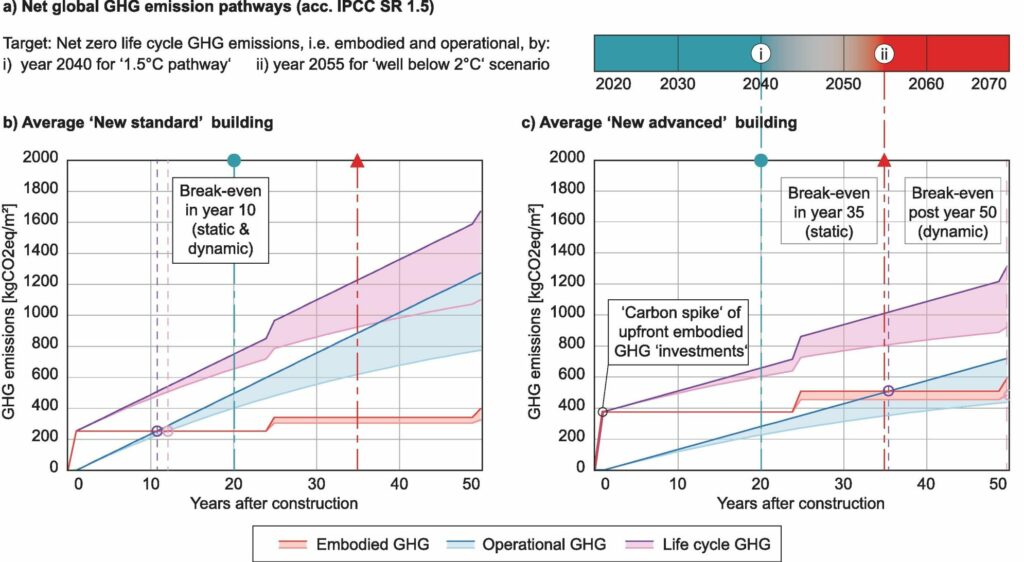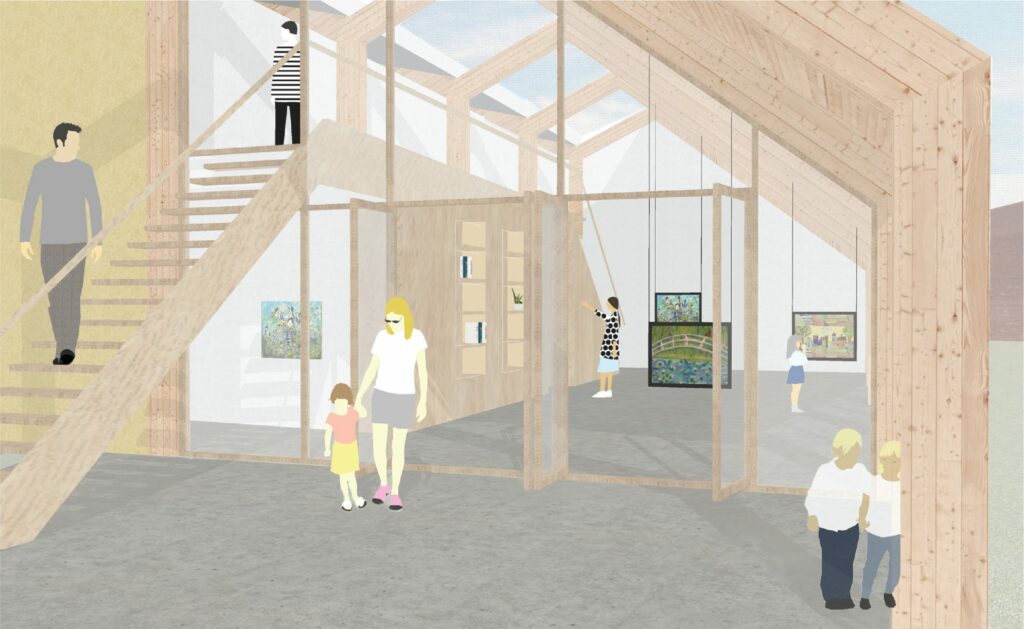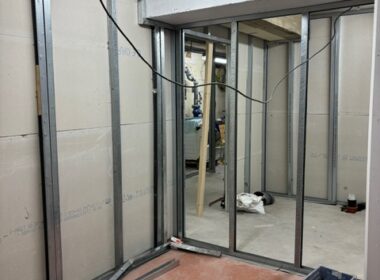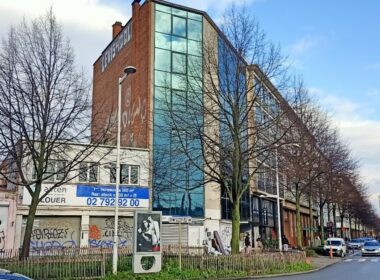The carbon spike
The environmental impact of buildings is separated in two categories: operational environmental impact and embodied environmental impact. Operational environmental impact is the impact which is generated by a building during its entire usage phase. These are mainly the result of the energy used for conditioning the interior climate of the building. Reducing the operational impact was until recently the main concern of the design practice. By now, architects know how to create energetically performant buildings which can claim a low operational environmental impact. So, our focus has shifted to the construction process and the environmental impact that is related to the production, assembly, and maintenance of buildings. This impact is called the embodied environmental impact. With our attempts to reduce operational environmental impact, the embodied environmental impact has increased, due to a higher amount of materials that are used in contemporary, energetically performant buildings.
In current practice we see that in most buildings, the embodied environmental impact tends to become higher than the operational impact. This is not the only reason why the embodied environmental impact needs our attention. The embodied environmental impact is also the initial environmental impact, which happens before or at the very beginning of construction, so before the actual usage of the building, and in a short period, forming a considerable ‘carbon spike’ (1).
Mitigating this initial carbon spike is an important element in the overall strategy to lower the environmental footprint of our buildings, as it happens upfront (‘now’) and it is sure that it will happen. Choices influencing this spike should be well considered, and if decisions are made that increase the embodied environmental impact, they should be offset by lower operational environmental impacts. The time to offset higher initial impacts, which can be seen as ‘environmental investments’, will vary case by case, by the function and use of a building and by various future energy mix scenarios. There is still quite some uncertainty about this ‘environmental payback period’. Current climate observations have made clear that actions to cut environmental impact in general, and carbon emissions in particular, should start ‘now’ to meet the IPCC 1,5°C pathway. However, generating now a carbon spike with the intention to, hopefully, reduce emissions on the long term, maybe only become breakeven in 20 years, and that is a situation to avoid. So, optimizing both the operational and the embodied environmental impact of our buildings should be of our first concern.

Credits: Embodied GHG emissions of buildings (1)
The embodied environmental impact of technical installations
For some years, the embodied environmental impact of common building products is an important decision driver in architectural design practice, with the Life Cycle Analysis tool TOTEM as main guidance in the Belgian context. Hence, the strategy to reduce the amount of new materials through smart combining of building programming and the reuse of existing buildings, building structures and building materials.
Up to now, the embodied environmental impact of technical installations in buildings is overlooked. This is mainly due to the complexity of these installations and the lack of data on the quantities of materials which are used in technical installations. Recent studies have given us more insights and show that between 14% up to 45% of the embodied environmental impact of office buildings is due to the technical installations (2), depending on the type of installation and the considered lifespan. This comes not as a surprise, as technical installations consist often out of (rare) metals and contain liquids with a high GWP (Global Warming Potential). The hot spots are situated in the HVAC distribution and emission systems, the electric wiring (copper), the cooling refrigerants, and the PV panels.


Crédits photo: archipelago – Steiner school Wijgmaal
Low Tech as a strategy
Mitigating the embodied environmental impact of technical installations can be done by using different strategies, which in most cases should be combined. The main strategy is to reduce the amount of materials used in the technical installation and to avoid the use of cooling refrigerants with a high GWP.
It’s interesting to notice that different parts of a technical installation have different lifespans, for instance production units have a short lifespan and distribution systems have a long lifespan. Different parts of an installation also have different impacts on the operational energy use and hence the operational environmental impact. The materialization of distribution systems and production units should therefore be considered differently. Distribution systems should be conceived in a way that they are either future proof, or minimized, so that their material impact is minimal. Future proof also means that on a middle-long term different production units, with different energy sources, can be plugged in the installation. On a (rather) short term, we should consider the best equilibrium between material impact and primary energy use, with the related short term environmental footprint (3).
One of the key strategies to reduce the amount and impact of technical installations lays in the architectural conception of the building. The application of climate responsive design strategies, in which the architectural conception of the building mitigates already the bulk of the disturbing influences of the outside climate (heat and cold), offers strategies for low tech maintenance of a comfortable and healthy indoor climate, though, for instance, qualitative daylight harvesting, thermal mass and natural ventilation. By applying these strategies, the net energy demand of the building for maintaining its indoor climate can be considerable lowered. Research has shown that these strategies not only provide to be useful in our current climate, but are even more important in future climate conditions (2 and 4).
Author: Joost DECLERCQ – ARCHIPELAGO ARCHITECTS
Read also: Wood construction, a pillar of Europe’s Green Deal; Designing future renovations; Collaborate with Hautes Écoles researchers from the SynHERA network to bring your innovation projects to life; How does climate change influence architecture?; The ban of fluorescent lamps: bring lighting to the next level
Further literature
(1) Martin Röck, et al. (2020). Embodied GHG emissions of buildings – The hidden challenge for effective climate change mitigation, in: Applied Energy (https://www.researchgate.net/publication/337591460_Embodied_GHG_emissions_of_buildings_-The_hidden_challenge_for_effective_climate_change_mitigation)
(2) Delphine Ramon, (2021). Towards future-proof buildings in Belgium – Climate and life cycle modelling for low-impact climate robust office buildings, Phd Thesis, KU Leuven (https://www.researchportal.be/en/publication/towards-future-proof-buildings-belgium-climate-and-life-cycle-modelling-low-impact)
(3) Joost Declercq, (2020). Circulaire economie toegepast op technische installaties – Technische installaties, aanpasbaarheid en reversibiliteit, Seminarie Duurzame Gebouwen, Leefmilieu Brussel (https://leefmilieu.brussels/sites/default/files/user_files/sem05-201016-6-jd-nl.pdf and https://leefmilieu.brussels/sites/default/files/user_files/sem05-201016-6-jd-fr.pdf )
(4) Joost Declercq, et al. (2021). The feasibility of natural ventilative cooling in an office building in a Flemish urban context and the impact of climate change, Proceedings of the 17th IBPSA Conference (https://doi.org/10.26868/25222708.2021.30811)





